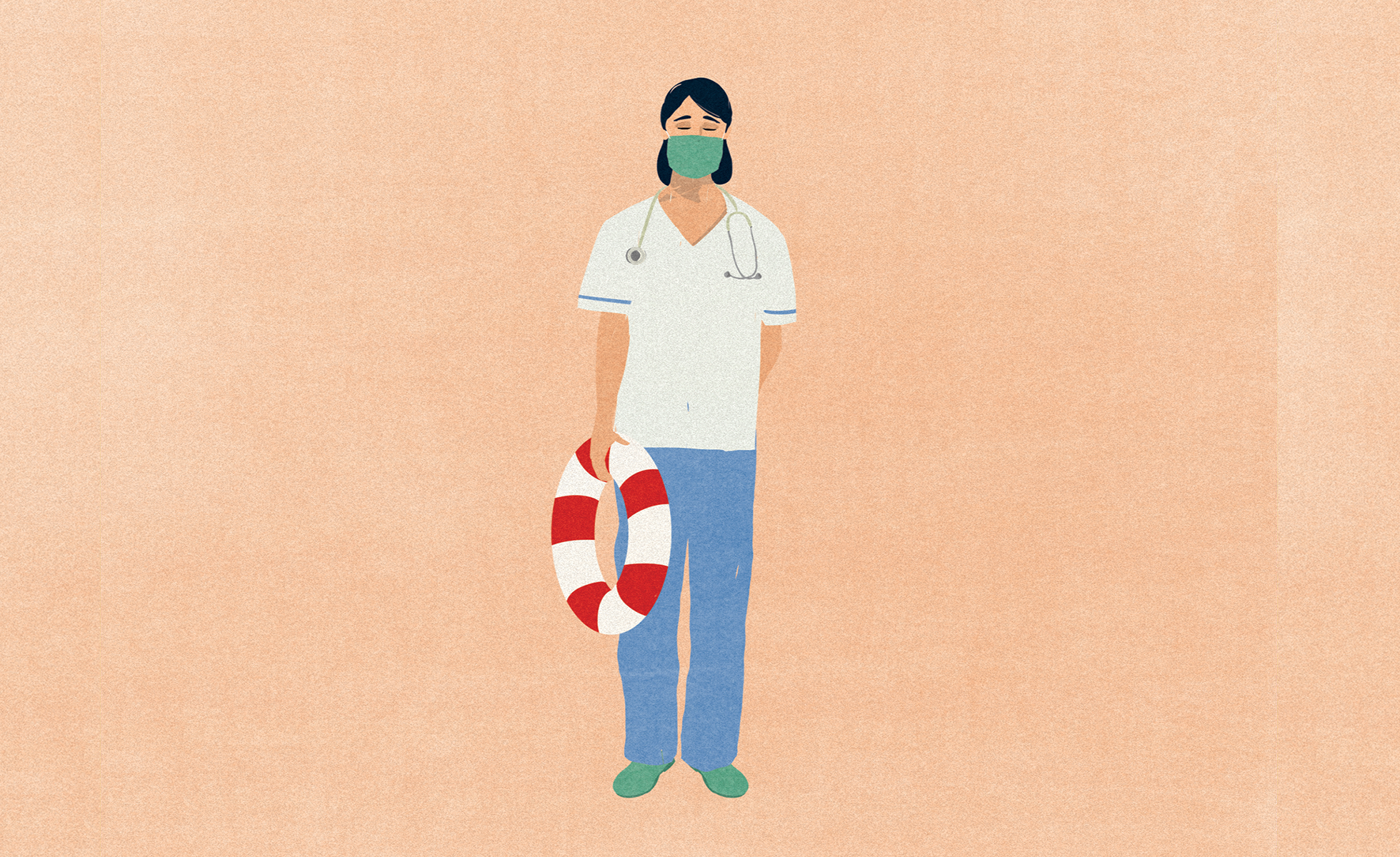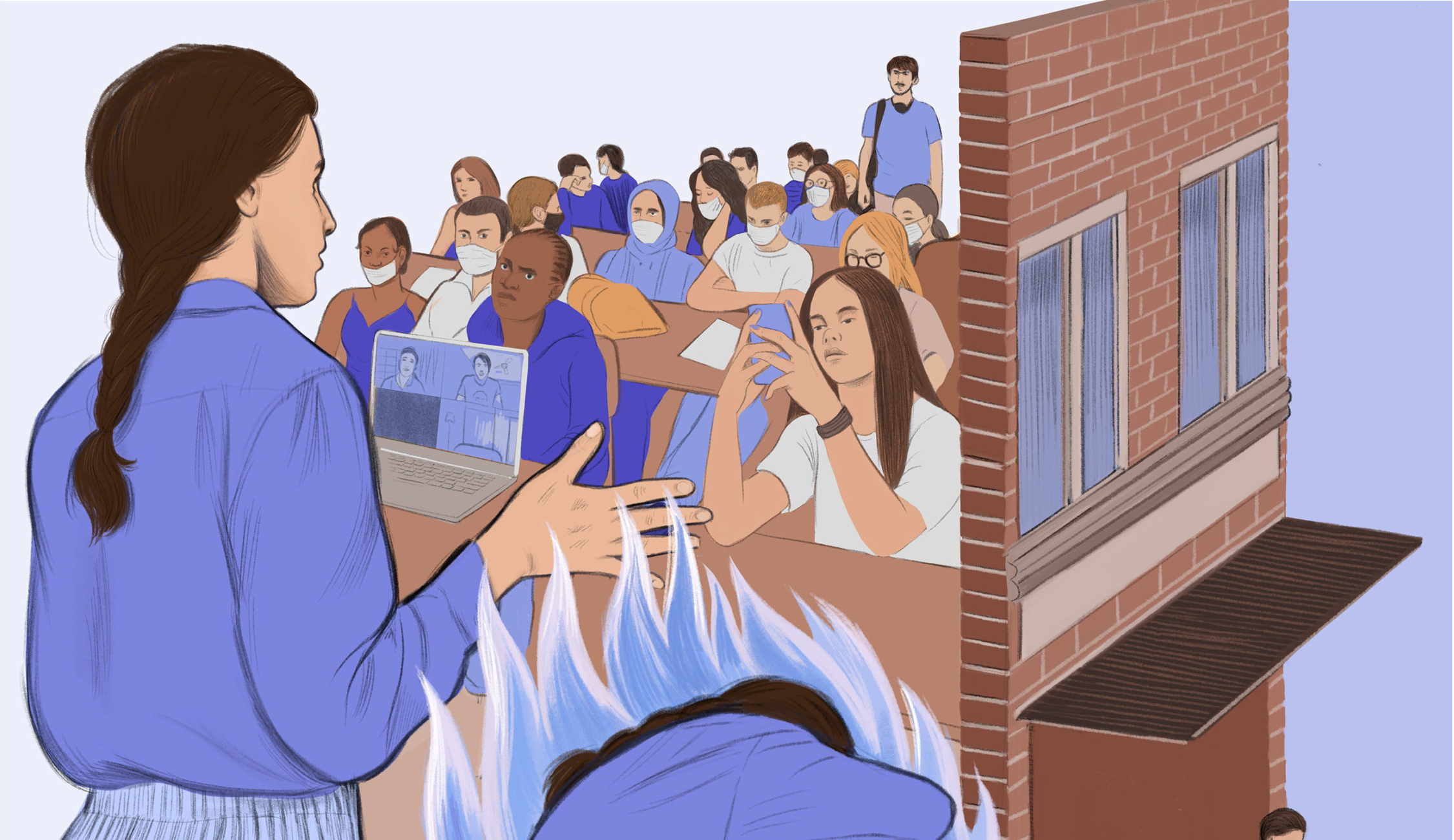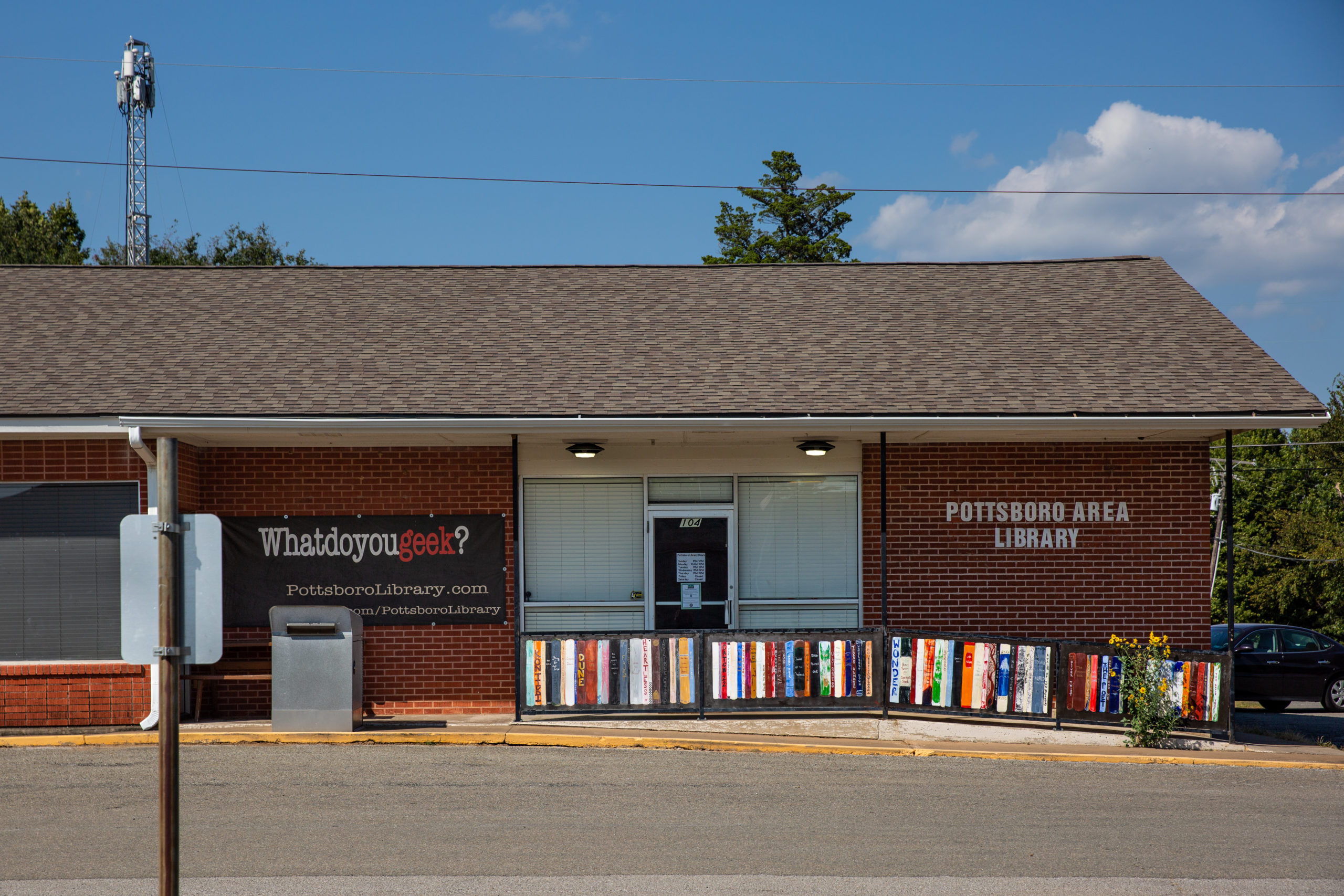
Texas Nursing Home Residents Were Already at Risk. Then COVID-19 Hit.
A management company with a poor record of infection control is linked to COVID-19 outbreaks in nursing homes across Texas.

Above: Experts say that nursing home staff frequently must work at more than one facility to make a living—a primary factor in the spread of COVID-19 between facilities.
When Gary Blake launched Creative Solutions in Healthcare in 2000, he started small, opening a single modest nursing home in Granbury. Now Blake runs a nursing home empire. He owns or operates 64 nursing facilities across Texas, from big cities to rural cow towns; Creative Solutions pulls in a reported $282 million annually. But the Fort Worth-based company and other for-profit facilities throughout the state have been dogged by deaths of residents and serious rule violations for years, the Texas Observer and Type Investigations found. And, advocates say, federal and state regulators have done little to hold them accountable.
Then COVID-19 hit. Just weeks after the coronavirus was first detected in Texas, nursing homes statewide quickly became the main breeding grounds for the virus as officials struggled to control the spread. As of July 13, 8,900 residents at 830 nursing homes have been infected; 1,150 have died.
As the pandemic spreads across Texas, it’s exacerbating unsafe and unsanitary conditions inside a handful of nursing homes owned or operated by Creative Solutions.
In March, the virus crept into Whisperwood Nursing and Rehabilitation Center in Lubbock, a 114-bed nursing home acquired by Creative Solutions in 2012. By the next month, the facility accounted for five of the county’s six COVID-related deaths and almost half of its 191 total cases at the time. Blake told the local NBC affiliate that “we have been closely monitoring development of the coronavirus pandemic and working to mitigate its impact on our residents, staff, their families, and our community.” But two Whisperwood employees told the Lubbock Avalanche-Journal otherwise, saying that Creative Solutions did not provide protective gear in a timely manner and encouraged them to work while sick.
Creative Solutions did not respond to an Observer request for comment for this story.
Whisperwood, like the four other Creative Solutions nursing homes in Texas with confirmed COVID-19 outbreaks, has a history of running afoul of health and safety regulations. Inspectors have documented 27 deficiencies at Whisperwood alone since 2018, including one for failing to follow infection control rules. The company has faced only one fine, of $7,200.
Residents and staff at Creative Solutions nursing homes in Tyler, San Antonio, El Paso, and Schertz, near San Antonio, have also reportedly been infected by the coronavirus. It’s possible that more of the company’s nursing homes in Texas have been infiltrated by COVID-19, but state officials won’t specify which ones have infections. The state didn’t even begin widespread testing in all nursing homes until May 11; it didn’t release basic information about the virus in these facilities until May 15.
The lack of data also makes it exceedingly difficult to determine the true scope of the pandemic’s spread inside nursing homes, including privately owned ones like those operated by Creative Solutions. But reports of government inspections conducted before the pandemic paint a vivid picture of understaffed facilities where infection prevention protocols were sometimes ignored and where patients sustained severe injuries.
“Infection control has been the most frequently cited violation at Texas nursing homes for a number of years. In some respect it’s not surprising that we’re having this big of an issue [with COVID-19] because we’ve known that infection control has been a problem.”
A federal inspector who visited Whisperwood in February noted a laundry list of problems, at least two of them related to infection control. The inspector observed an employee leaving an oxygen mask cannula on a resident’s bed next to a urinal “with amber liquid in it.” Another worker checked a resident’s vital signs, then put the equipment back into a medical cart without cleaning it. “These deficient practices have the potential to affect all residents in the facility by exposing them to care that could lead to infection, tissue breakdown, communicable diseases, and feelings of isolation related to poor hygiene,” the inspector’s report reads.
State health officials are looking into the Whisperwood outbreak, but a spokesperson for the Texas Health and Human Services Commission would not provide any details, citing an ongoing investigation.
“Infection control has been the most frequently cited violation at Texas nursing homes for a number of years,” said Amanda Fredriksen, the associate state director of AARP Texas. “In some respect it’s not surprising that we’re having this big of an issue [with COVID-19] because we’ve known that infection control has been a problem.” Kaiser Health News reported in March that 63 percent of nursing homes nationwide have been cited for infection control deficiencies since 2016, making it the most common citation. The violations were more likely at understaffed nursing homes, and facilities faced fines in only 1 percent of cases.
At the five Creative Solutions facilities with reported coronavirus outbreaks, inspectors have tallied 157 deficiencies and assessed only $25,300 in fines since 2018.
Federal and state lawmakers have squandered opportunities to strengthen health care practices inside nursing homes. In 2016, the Obama administration required each facility to have an infection control specialist on staff. Last year, the Trump administration proposed loosening that and other other Obama-era rules that aimed at controlling infection. Seema Verma, head of the U.S. Centers for Medicare and Medicaid Services (CMS), told the New York Times that Trump’s proposal was meant “to make sure that our regulations are not so burdensome that they hurt the industry.”
Experts say that nursing home staff frequently must work at more than one facility to make a living—a primary factor in the spread of the disease between facilities. In Texas, many nursing homes don’t pay enough for staff to work at a single establishment, or choose not to offer full-time positions. In Washington state nursing homes, the early epicenter of COVID-19 cases in the United States, employees who worked at multiple facilities were unwittingly spreading the virus, according to research published in the New England Journal of Medicine.
In early April, health authorities in San Antonio and Lubbock issued orders to nursing homes that they no longer allow employees to work in more than one facility. It appears those edicts were followed, but the damage was already done.
After 75 residents and staff contracted the virus at San Antonio’s Southeast Nursing Home and Rehabilitation Center, officials tried to determine which other facilities in the city had overlapping workers. Two Creative Solutions facilities did: Buena Vida Nursing and Rehab and the Rio at Mission Trails. No confirmed cases had been reported at Buena Vida. At the Rio, however, officials determined that at least nine residents and eight staff members have been infected. It was just the latest in a string of problems at the facility. CMS ranks the Rio as “much below average” in the criteria it tracks: health inspections, staffing, and quality measures.
In September, just six months before COVID-19 hit Texas, the Rio was cited for violating federal infection control rules. An employee failed to sanitize her hands while changing a patient’s catheter, then put his “soiled briefs” back on him when the procedure was done, according to the CMS report. In an inspection a year earlier, the inspector noted a catheter collection bag dragging the floor in one room and observed an employee disposing of a patient’s wound dressings in a normal plastic bag instead of one marked for biohazards.
With infections and deaths growing in San Antonio nursing homes, health authorities have embarked on a plan to consolidate all of the city’s infected nursing home residents together—inside another Creative Solutions facility. The plan was met with quick criticism from some local leaders, who pointed to a spotty inspection record at the proposed site, the 92-bed River City Care Center, which a Bexar County commissioner has called “horrible.”
In a 2018 interview with Skilled Nursing News, a trade publication, Creative Solutions CEO Blake waxed poetic on his long career in the for-profit nursing world. Texas offers the “ultimate entrepreneurial experience,” he said, for business people who are up to the task. Blake’s first foray in 2000 was born out of a wave of industry bankruptcies—but the risk paid off, he said. “We certainly have no intention of going out of business.”
Read more from the Observer:
-
Neglected in Care: Long before the coronavirus devastated nursing homes, inadequate staffing in for-profit Texas facilities endangered residents, leading to injuries and deaths.
-
Amid a National Reckoning Over Racial Injustice, Royce West Seeks to Upset MJ Hegar—and the DSCC: Texas’ Democratic Senate runoff to face John Cornyn has taken on new political significance as a Black state senator vies to defeat the national party’s favored candidate.
-
COVID-19 is Surging in Rural Texas, Threatening to Overwhelm Local Hospitals: ICU beds are limited, medical providers are falling sick, and urban hospitals where small facilities transfer critical patients are running out of space.


